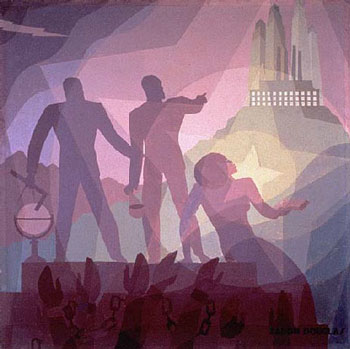
Certainly; a profound effect. It is fashionable to speak more of correlations than cause-and-effect, but when you’re talking about the flourishing of African-American literature, art, music, dance, and social commentary in the 1920s, you’re talking about people who actively changed the conditions of life in America for blacks and whites alike.
Urban migration by rural blacks and a national trend toward seeking new ways of self-expression and new explanations of social phenomena precipitated the renaissance, first called “The New Negro Movement”. Poets like Langston Hughes, Claude McKay and Countee Cullen and prose writers such as Zora Neale Hurston and Nella Larson changed the shape of black identity and perceptions of blacks in society, even as the emergence of black culture was sending waves through the general culture.
There were events spurred by these writings, or spurred by the same emerging consciousness that made them possible. In 1919, the 369th Regiment marched up Fifth Avenue to Harlem; the first Pan African Congress was organized by W.E.B. Du Bois in Paris; there were race riots in Washington, D.C., Chicago, Charleston, Knoxville, Omaha, and elsewhere.
The Race Relations Commission was founded in 1920. Marcus Garvey that year founded the Black Star shipping line, and Benjamin Brawley published “The Negro in Literature and Art in the United States”.
In 1920, also, the Universal Negro Improvement Association (UNIA) Convention held at Madison Square Garden, Charles Gilpin starred in Eugene O’Neill’s play, “The Emperor Jones” (in 1922), and noted poet James Weldon Johnson became the first black officer (secretary) of NAACP in 1920. That year, Claude McKay published “Spring in New Hampshire”, and Du Bois’s “Darkwater” was published.
Benjamin Brawley published “Social History of the American Negro” in 1921. In 1922, the first anti-lynching legislation was approved by House of Representatives, and “The Book of American Negro Poetry” edited by James Weldon Johnson; was published. “The Cotton Club” was founded in 1923. The first Crisis awards ceremony was held at the Renaissance Casino; Countee Cullen won first prize.
Louis Armstrong, W.C. Handy, and other musicians got their starts during this time.These writers, musicians, actors, artists, entrepreneurs and activists, were part of a huge wave of twentieth-century events reshaping the culture of American blacks and all Americans for all time.
The Civil Rights Movement of the nineteen sixties was but the crest of this century of achievement, and Martin Luther King Jr. and others wrote large on the pages of history. Before his murder in 1963, King applied his dream and his vision to the realm of action.
As the Italian Renaissance led to the resurgence of European culture, arts and science, the great Americans of Harlem in the twenties transformed America and the world.”If I have seen far,” Isaac Newton wrote, “it is because I have stood on the shoulders of giants.” When you speak of the Harlem Renaissance, you are speaking of giants in human achievement.



